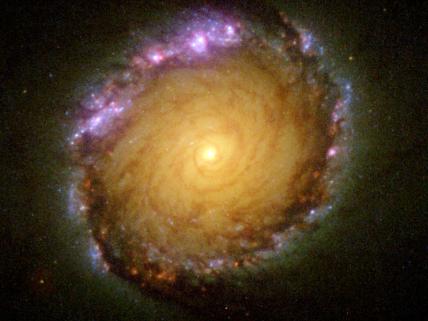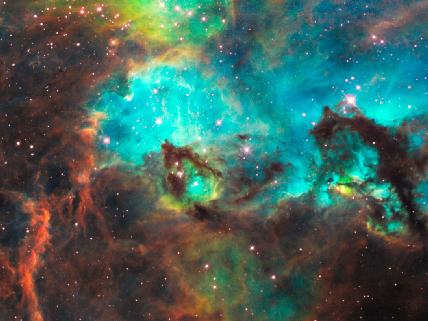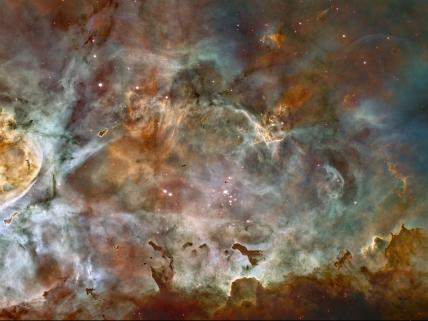NASA Picture of the Day
"NASA's Hubble Space Telescope reveals the center of the magnificent barred spiral galaxy NGC 1512 in all wavelengths from ultraviolet to infrared. The colors (which indicate differences in light intensity) map where newly born star clusters exist in both 'dusty' and 'clean' regions of the galaxy.
NGC 1512 in the southern constellation of Horologium is located 30 million light-years away, relatively nearby as galaxies go, it is bright enough to be seen with amateur telescopes. The galaxy spans 70,000 light-years, nearly as much as our own Milky Way galaxy.
The galaxy's core is unique for its stunning 2,400 light-year-wide circle of infant star clusters, called a "circumnuclear" starburst ring. Starbursts are episodes of vigorous formation of new stars and are found in a variety of galaxy environments.
Taking advantage of Hubble's sharp vision, as well as its unique wavelength coverage, a team of Israeli and American astronomers performed one of the broadest and most detailed studies ever of such star-forming regions. The results show that in NGC 1512 newly born star clusters exist in both dusty and clean environments. The clean clusters are readily seen in ultraviolet and visible light, appearing as bright, blue clumps in the image. However, the dusty clusters are revealed only by the glow of the gas clouds in which they are hidden, as detected in red and infrared wavelengths by the Hubble cameras. This glow can be seen as red light permeating the dark, dusty lanes in the ring.
Circumstellar star-forming rings are common in the universe. Such rings within barred spiral galaxies may in fact comprise the most numerous class of nearby starburst regions."
Image Credit: NASA, ESA, and D. Maoz (Tel-Aviv University and Columbia University)




